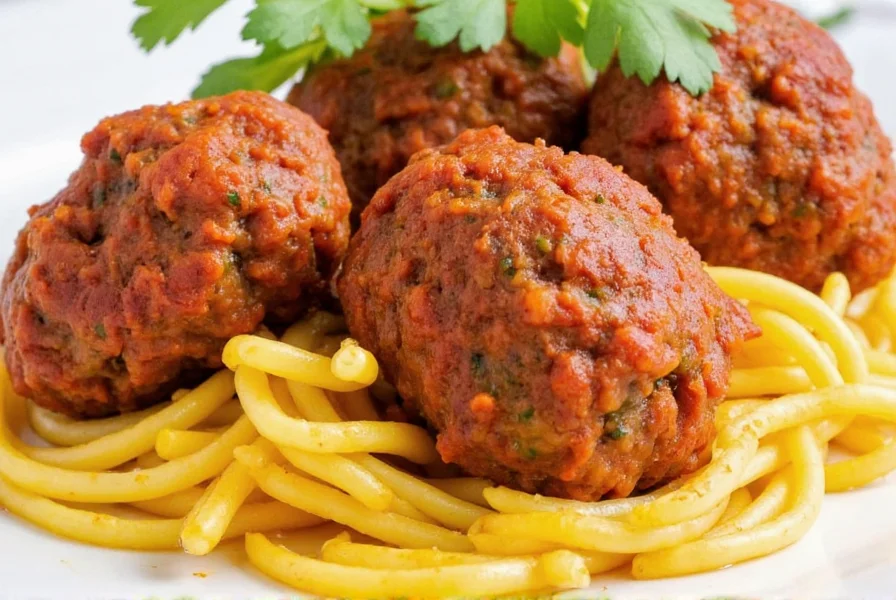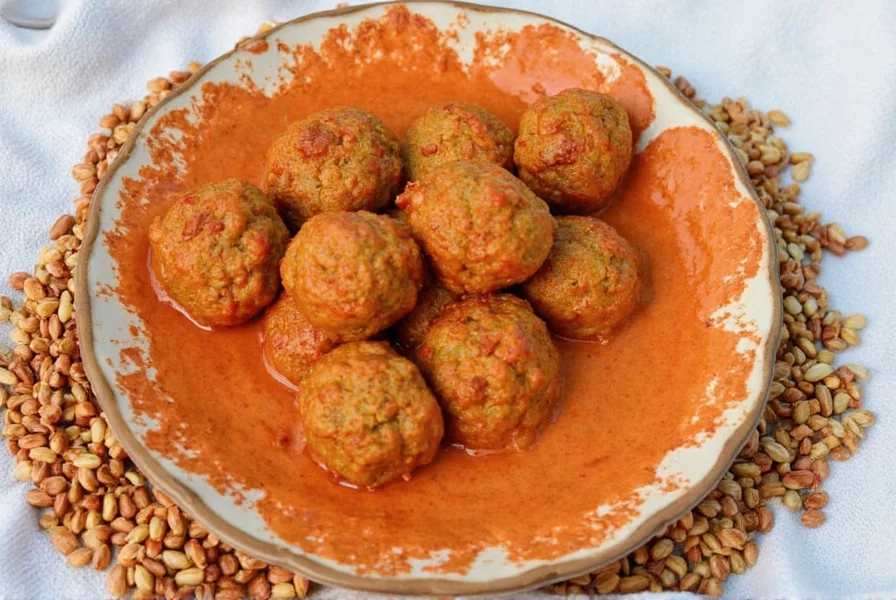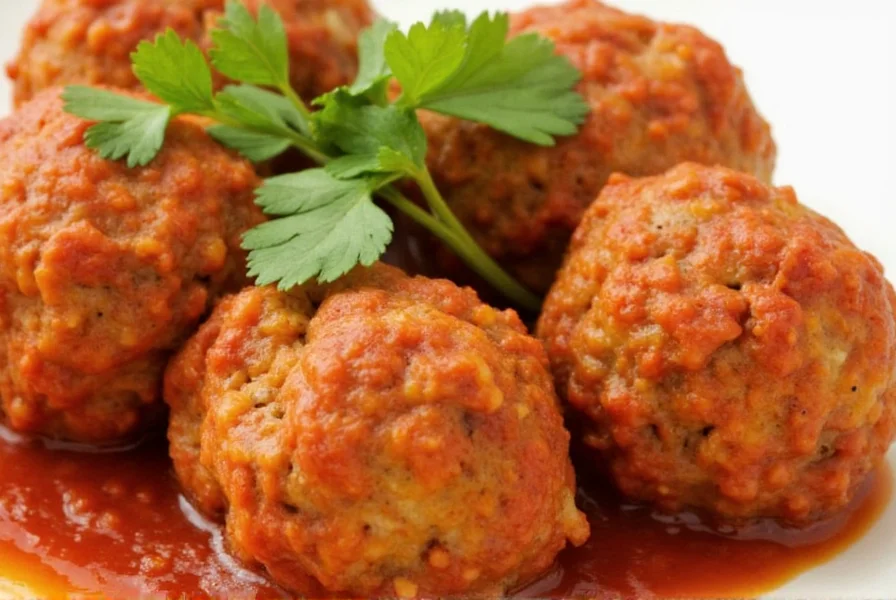Albondigas vs. Meatballs: What’s the Spicy Difference? A Global Flavor Adventure
In the vast, sizzling world of global cuisine, few things bring people together like a perfectly cooked meatball. But when it comes to Spanish albondigas, there's more than just a name change at play — it's a full flavor revolution!
If you're someone who thinks all meatballs are created equal, think again. Today we’re diving into the spicy, savory, and surprisingly complex universe of albondigas. Whether you're a seasoned home cook or a spice-loving enthusiast, this journey promises to ignite your taste buds and inspire your next kitchen experiment.
Table of Contents
- Introduction to Albondigas
- Meatballs vs. Albondigas: Key Differences
- A Taste of Tradition: The History Behind Spanish Albondigas
- Spice It Up! Essential Spices in Spanish Albondigas
- How to Make Authentic Albondigas at Home
- Buying Guide: Best Ingredients for Your Albondigas
- Serving Ideas & Pairings
- Conclusion
Introduction to Albondigas
At first glance, albondigas might look like the Mediterranean cousin of Italian meatballs, but they carry a distinct identity rooted in Spanish and Moorish culinary traditions. Typically smaller and more aromatic, albondigas are often soaked in rich tomato sauces or infused with herbs and spices unique to the Iberian Peninsula.
What sets them apart isn’t just the ingredients, but also the technique and intention behind each bite. In Spain, these little flavor bombs are often served as tapas, making them ideal for sharing, snacking, or starting a meal right.

Meatballs vs. Albondigas: Key Differences
Let’s set the record straight — while both dishes involve minced meat formed into balls, the similarities end there. Below is a handy comparison table to highlight the differences:
| Feature | Italian Meatballs | Spanish Albondigas |
|---|---|---|
| Size | Larger (golf ball to tennis ball) | Smaller (walnut to small egg) |
| Texture | Denser, chewier | Softer, lighter, more tender |
| Main Protein | Beef, pork, or mix | Pork, beef, or even fish |
| Binding Agent | Breadcrumbs, egg | Bread soaked in milk, egg whites |
| Flavor Profile | Tomato-forward, herby | Herbs + smoked paprika, saffron |
| Serving Style | As main dish with pasta | Tapas, stew, soup ingredient |
A Taste of Tradition: The History Behind Spanish Albondigas
The word 'albondiga' itself comes from the Arabic al-bunduqa, meaning 'hazelnut', reflecting the small, round shape of these morsels. Their origins trace back to Moorish Spain, where the use of fragrant spices, nuts, and preserved fruits was common.
Over time, albondigas became deeply embedded in Spanish cuisine, especially in regional dishes like albondigas en salsa (meatballs in sauce) and albondigas de pescado (fish-based meatballs). These dishes reflect the fusion of Arab, Jewish, and Christian influences that shaped Spanish food culture.
Spice It Up! Essential Spices in Spanish Albondigas
While many cuisines rely on garlic and oregano for flavor, Spanish albondigas take a bolder route. Here are some of the most essential spices used in authentic recipes:
- Smoked Paprika (Pimentón de la Vera): This is the heart of Spanish flavor. Smoked over oak fires, it adds depth, warmth, and a subtle barbecue note.
- Nutmeg: A touch of nutmeg adds complexity and enhances the richness of the meat.
- Cumin: Used sparingly, cumin contributes earthiness and complements the smokiness of paprika.
- Garlic: Freshly minced garlic gives a punchy start before being mellowed during cooking.
- Saffron: Occasionally added to the sauce, saffron brings a golden hue and floral aroma.
Pro Tip: Toast whole spices like cumin seeds briefly in a dry pan before grinding them for a more intense flavor.
How to Make Authentic Albondigas at Home
Making albondigas at home is easier than you think — and far tastier than store-bought versions. Follow this simple yet flavorful recipe to bring a bit of Spain to your kitchen.
Ingredients
- 500g ground pork (or a mix of pork and beef)
- 1/4 cup breadcrumbs
- 1 egg white
- 1 slice bread soaked in milk (squeeze out excess)
- 2 cloves garlic, minced
- 1 tsp smoked paprika
- 1/2 tsp salt
- 1/4 tsp black pepper
- 1/4 tsp ground cumin
- 1/8 tsp nutmeg
- Olive oil for frying
Instructions
- In a large bowl, combine ground meat, breadcrumbs, egg white, soaked bread, garlic, and spices.
- Mix thoroughly using clean hands until well incorporated. Don’t overmix — aim for soft, uniform texture.
- Roll mixture into walnut-sized balls. Keep them small for authentic tapas style.
- Heat olive oil in a skillet over medium heat. Fry meatballs gently, turning often, until golden brown and cooked through (about 6–8 minutes).
- Transfer to paper towels to drain excess oil.
- Serve warm with a side of rich tomato sauce or as part of a stew.

Buying Guide: Best Ingredients for Your Albondigas
Creating authentic albondigas starts with choosing high-quality ingredients. Here’s a breakdown of what to look for when shopping:
1. Ground Meat
- Pork: Offers juiciness and rich flavor. Ideal for traditional recipes.
- Beef: Adds deeper umami notes, great for modern twists.
- Vegetarian Option: Use finely chopped mushrooms or chickpeas mixed with walnuts and oats for a meatless version.
2. Smoked Paprika
- Best Brands: La Dalia, Pimentón de la Vera PDO
- Use Case: For seasoning meatballs and sauces
- Target Audience: Home cooks, professional chefs, spice collectors
- Occasion: Everyday cooking, themed dinner parties
3. Bread Soaked in Milk
- Type: Day-old white sandwich bread
- Alternative: Brioche or buns for richer flavor
- Why? Keeps meatballs moist and tender
4. Garlic
- Fresh vs. Powder: Fresh garlic offers more punch; powder is convenient for batch cooking
- Tip: Press garlic through a press for even distribution
Serving Ideas & Pairings
Albondigas are incredibly versatile. Here are some fun and creative ways to serve them:
- Tapas Style: Serve with toothpicks alongside olives, pickled vegetables, and crusty bread.
- Over Rice: Spoon them onto saffron rice or creamy polenta for a comforting one-dish meal.
- With Eggs: Breakfast lovers can try them with shakshuka or scrambled eggs for a Spanish twist.
- As a Soup Enhancer: Drop a few into a vegetable or tomato broth for extra protein and flavor.
- On Sandwiches: Stuff them into baguettes with aioli and roasted peppers for an instant gourmet lunch.
Conclusion
From their ancient roots to their modern-day reinvention, Spanish albondigas represent a perfect blend of tradition and innovation. They may be small in size, but they pack a punch of flavor, history, and cultural significance.
Whether you’re hosting a tapas night or experimenting with global flavors in your own kitchen, albondigas offer a delicious way to explore the spice-laden heritage of Spain. So roll up your sleeves, gather your ingredients, and let those tiny meatballs transport you across borders — one bite at a time.











 浙公网安备
33010002000092号
浙公网安备
33010002000092号 浙B2-20120091-4
浙B2-20120091-4